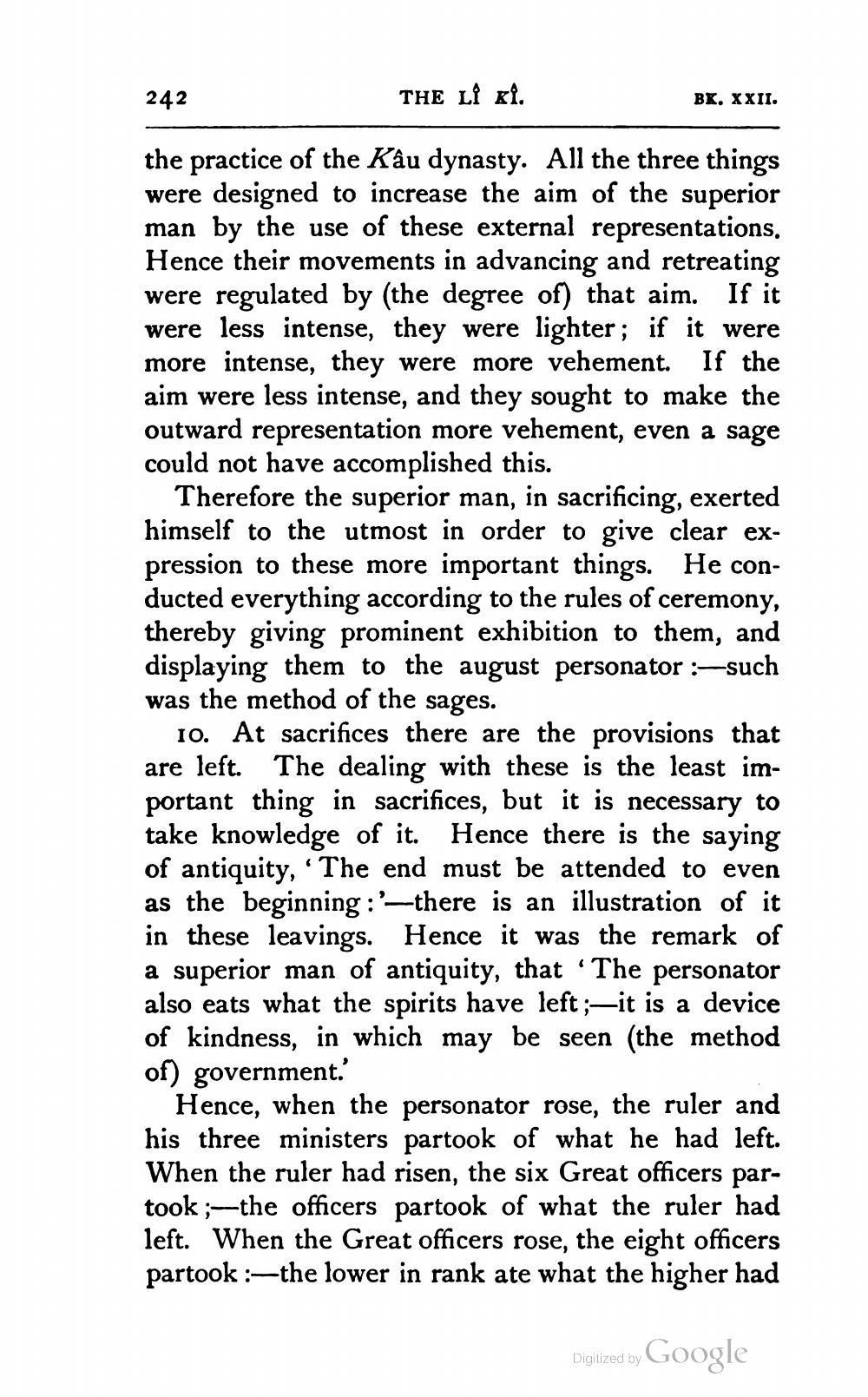________________
242
THE LÎ ki.
BK. XXII.
the practice of the Kâu dynasty. All the three things were designed to increase the aim of the superior man by the use of these external representations, Hence their movements in advancing and retreating were regulated by (the degree of) that aim. If it were less intense, they were lighter; if it were more intense, they were more vehement. If the aim were less intense, and they sought to make the outward representation more vehement, even a sage could not have accomplished this.
Therefore the superior man, in sacrificing, exerted himself to the utmost in order to give clear expression to these more important things. He conducted everything according to the rules of ceremony, thereby giving prominent exhibition to them, and displaying them to the august personator :such was the method of the sages.
10. At sacrifices there are the provisions that are left. The dealing with these is the least important thing in sacrifices, but it is necessary to take knowledge of it. Hence there is the saying of antiquity, 'The end must be attended to even as the beginning :'—there is an illustration of it in these leavings. Hence it was the remark of a superior man of antiquity, that “The personator also eats what the spirits have left ;—it is a device of kindness, in which may be seen (the method of) government.
Hence, when the personator rose, the ruler and his three ministers partook of what he had left. When the ruler had risen, the six Great officers partook ;—the officers partook of what the ruler had left. When the Great officers rose, the eight officers partook :—the lower in rank ate what the higher had
Digitized by Google




